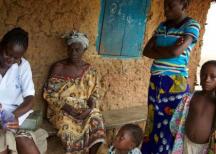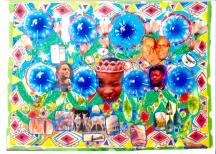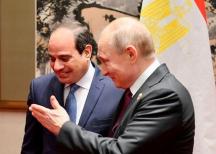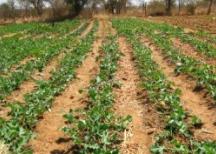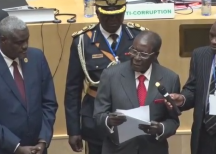
During the 1982 Lebanon War with Israel, a massacre was carried out on Palestinian and Lebanese civilians in the refugee camps of Sabra and Shatila in Beirut, between 16 and 18 September. Although numerous human rights groups argue that it was a war crime and genocide, the event has not been investigated by international officials. Franklin Lamb tells the story of Munir, who was 11 years old at the time of the massacre, and who saw his family killed or disappear in its aftermath.
The untreated psychic wounds are still open. Accountability, justice and basic civil rights for the survivors are still denied.
Scores of horror testimonies have been shared over the past nearly three decades by survivors of the September 1982 Sabra-Shatila massacre. More come to light only through circumstantial evidence because would-be affiants perished during the slaughter. Other eyewitnesses are just beginning to emerge from deep trauma or self-imposed silence.
Some testimonies will be shared this month by massacre survivors at Shatila camp. They will sit with the growing numbers of international visitors who annually come to commemorate one of the most horrific crimes of the 20th century.
THERE ARE NO AVERAGE MASSACRE TESTIMONIES
Zeina, a handsome bronzed-faced middle-aged woman, an acquaintance of Munir Mohammad’s family, asked a foreigner the other day, ‘How can it be 28 years? I think it was just last fall that my husband Hussam and our two daughters, Maya, 8 years old, and Sirham, 9 years old, left our two-room home to search for food because the Israeli army had sealed Shatila camp nearly two days before and few inside Shatila Camp had any. I still pray and wait for them to return.’
In Shatila Palestinian refugee camp and outside Abu Yassir’s shelter, the bullet marks still cover the lower half of the 11 ‘walls of death’ where some of the dried blood is mixed and feathered in with the thin mortar. An elderly gentleman named Abu Samer still has some souvenirs of the event: three American automatic pistols fitted with silencers, a couple of knives and axes that were strapped to some of the killers belts as they quickly and silently shot, carved and chopped whoever they came upon starting at around 6 pm on Thursday, 16 September, 1982. Plus a couple of whisky bottles. These weapons were gifted to Israel by the US Congress and subsequently issued along with drugs and alcohol and other ‘policing equipment’ to the killers in his ‘most moral army’ by then-minister of defence of Israel Ariel Sharon.
Earlier this year, one of the murderers from the Numour al-Ahrar (Tigers of the Liberals) militia, the armed wing of Lebanon’s right-wing National Liberal Party founded by former Lebanese president Camille Chamoun, nonchalantly confessed, ‘We sometimes used these implements in order to advance silently through the alleys of Shatila so as not to cause unnecessary panic during our work.’ The Tigers militia, one of five Christian killer units, was assisted inside Shatila by more than two dozen Israeli Mossad agents, and led in this blitz by none other than Dani Chamoun, son of the former president.
NO PLAQUE OR SIGN NOTES WHAT HAPPENED HERE
The world learned of the slaughter at Sabra-Shatila on the morning of Sunday, 19 September, 1982. Photos, many now available on the Internet, taken by witnesses such as Ralph Shoneman, Mya Shone, Ryuichi Hirokawa, Ali Hasan Salman, Ramzi Hardar, Gunther Altenburg, and Gaza and Akka Palestine Red Crescent Society (PRCS) hospital staff, preserve the gruesome images deeply etched in the survivors’ memories. The Israeli Kahan Commission, five months later in its 7 February 1983 report, substantially whitewashed Israeli responsibility referring more than once to the massacre as ‘a war’.
Zeina ushered me down a narrow alley from her house arriving at the 3-by-8 metre wall outside her sister’s home, spraying here and there with an aerosol can as we walked. She apologised for the spray but insisted that she and her neighbors could even now smell the slaughter that happened there three decades earlier.
For readers unfamiliar with the location of Shatila Palestinian Refugee Camp in Beirut, this particular ‘wall of death’ is located across from the PRCS Akka Hospital, such as it is, after years without adequate financial or NGO support. Locating the 11 ‘walls of death’ requires help from the few older Palestinians who still live in this quarter. They are among those still living at the scene and who still vividly recall the details of the massacre. Some provide personal history of some of the butchered, seemingly urging the dead to return by making them seem so alive, often describing a personality trait and the name of their family village in Palestine. ’
‘A SWEET BOY WHO ADORED HIS OLDER BROTHERS MUTID AND BILAL’
Zeina recalls that Munir Mohammad was 12 years old on 16 September 1982, a pupil at the Shatila camp school, named Jalil (Galilee). Virtually all of the 75 remaining UNRWA schools in Lebanon, like other Palestinian institutions, are named after villages, towns or cities in occupied Palestine. Often they are named after villages that no longer actually exist, being among the 531 villages the Zionist colonisers obliterated during and after the 1947-48 Nakba (Catastrophe).
Zeina recalls that it was late on a Thursday afternoon, 16 September, that the Israeli shelling had grown intense. Designed to drive the camp residents into the shelters, almost all of which Israeli intelligence, arriving the previous day in three white vehicles and posing as ‘concerned NGO staff’ had identified and noted the coordinates on their maps. Some residents, thinking aid workers had come to help the refugees, actually revealed their secret sanctuaries. Other refugees, based on their experience in the crowded shelters during the preceding 75 days of indiscriminate, ‘Peace for Galilee Israeli bombing of Shatila, suggested to the ‘aid workers’ that the shelters needed better ventilation and perhaps the visitors would help provide it.
According to Zeina the Israeli agents quickly sketched the shelter locations, marked them with a red circle and returned to their headquarters which was located less than 70 metres on the raised terrain at the southeast corner of Shatila camp, still known as Turf Club Yards. Today, this sandy area still contains three death pits which, according to the late American journalist Janet Stevens, is where some of the hundreds of still missing bodies of the more than 3,000 slaughtered are likely buried. Janet had theorised that there was a second Sabra-Shatila massacre that occurred on the morning of Sunday, 19 September, which piggybacked the first and was conducted on the west side of Shatila inside the second Israeli-Phalange headquarters, known as the Cite Sportiff athletic complex. As the Israeli soldiers took custody of the surviving refugees from the Phalange militia, trucks entered Cite Sportiff loaded with hundreds of camp residents on the back to be taken to ‘holding centres’. Family members forced to wait outside heard volleys of gunfire and screams from inside the complex. Hours later the same flat bed trucks drove away to unknown locations, tarps covering the unseen mounded cargo.
Camp resident Sana Mahmoud Sersawi, one of the 23 complainants in the Belgium case filed against Ariel Sharon on 16 June 2001 (currently – but not fatally – sidetracked), explained, ‘The Israelis who were posted in front of the Kuwaiti embassy and at the Rihab benzene station at the entrance to Shatila demanded through loudspeakers that we come to them. That’s how we found ourselves in their hands. They took us to the Cite Sportiff, and the men were marched behind us. But they took the men’s shirts off and started blindfolding them. The Israelis interrogated the young people and the Phalange delivered about 200 more people to the Israelis. And that’s how neither my husband nor my sister’s husband ever came back.’
Journalist Robert Fisk and others who studied these events, concur that more slaughter was done during the 24-hour period after 8 am Saturday, the hour the Israeli Kahan Commission, which declined to interview any Palestinians, ruled that the Israelis had stopped all the killing.
Eyewitness testimony also established that the ‘aid workers’ described by Zeina passed the shelter descriptions and locations to Lebanese Forces operatives Elie Hobeika and Fadi Frem, and their ally, Major Saad Haddad of the Israeli-allied South Lebanese Army. Thursday evening, Hobeika, de facto commander since the assassination the week previously of Phalange leader and president-elect Bachir Gemayel, led one of the death squads inside the killing field of the Horst Tabet area near Abu Yassir’s shelter.
It was in eight of the 11 Israeli-located and marked shelters that the first of the massacre victims were quickly and methodically slaughtered. There being few perfect crimes, even in massacres, the killers failed to find three of the shelters. One of the overlooked shelters was just 25 metres from Abu Yassir’s shelter. Apart from these three undiscovered hiding places there were practically no Shatila shelter survivors.
American journalist David Lamb wrote about this first night of butchery and the ‘walls of death’:
‘Entire families were slain. Groups consisting of ten to 20 people were lined up against walls and sprayed with bullets. Mothers died while clutching their babies. All men appeared to be shot in the back. Five youths of fighting age were tied to a pickup truck and dragged through the streets before being shot.’
At around about 8 pm on 18 September Munir Mohammad entered the crowded Abu Yassir shelter with his mother Aida and his sisters and brothers Iman, Fadya, Mufid and Mu’in. Keeping the relatively few camp shelters for the women and children while the men took their chances outside was a common practice as the massacre unfolded. But a few men did enter to help calm their young children.
IF ANY OF YOU ARE INJURED, WE’LL TAKE YOU TO THE HOSPITAL
Munir later recalled events that night. ‘The killers arrived at the door of the shelter and yelled for everyone to come out. Men who they found were lined up against the wall outside. They were immediately machine gunned.’ As Munir watched, the killers left to kill other groups and then suddenly returned and opened fire on everyone, and all fell to the ground. Munir lay quietly not knowing if his mother and sisters were dead. Then he heard the killers yelling: ‘If any of you are injured, we’ll take you to the hospital. Don’t worry. Get up and you’ll see.’ A few did try to get up or moaned and they were instantly shot in the head.
Munir remembered, ‘Even though it was light out due to the Israeli flares over Shatila, the killers used bright flash lights to search the darkened corners. The killers were looking in the shadows.’ Suddenly Munir’s mother’s body seemed to shift in the mound of corpses next to him. Munir thought she might be going to get up since the killers promised to take anyone still alive to the hospital. Munir whispered to her, ‘Don’t get up mother, they’re lying.’ And Munir stayed motionless all night barely daring to breath, pretending to be dead.
Munir could not block out the killers’ words. Years later he would repeat to this interviewer as we passed the Shatila Burial ground known as Martyrs Square:
‘After they shot us, we were all down on the ground, and they were going back and forth, and they were saying: “If any of you are still alive, we’ll have mercy and pity and take them to the hospital. Come on, you can tell us.” If anyone moaned, or believed them and said they needed an ambulance, they would be rescued with shots and finished off there and then…What really disturbed me wasn’t just the death all around me. I…didn’t know whether my mother and sisters and brother had died. I knew most of the people around me had died. And it’s true I was afraid of dying myself. But what disturbed me so very much was that they were laughing, getting drunk and enjoying themselves all night long. They threw blankets on us and left us there till morning. All night long [Thursday the 16] I could hear the voices of the girls crying and screaming, “For God’s sake, leave us alone.” I mean…I can’t remember how many girls they raped. The girls’ voices, with their fear and pain, I can’t ever forget them.’
The same kind of dégagé is displayed by the half dozen confessed militia murderers featured in German director Monika Borgmann’s 2005 film ‘Massaker’, one of whom opined, ‘With hanging or shooting you just die, but this is double,’ explaining how he took an old Palestinian man and held him back against a wall, slicing him open in the shape of a cross. ‘You die twice since you also die from the fear,’ he said nonchalantly describing white flesh and bone as if in a charcuterie waiting to be served.
The killers also explained how they began a frantic rush to dispose of as many bodies as possible before the media entered Shatila. One testified how the Israeli army gave them large plastic trash bags to dispose of bodies. Another confessed that they forced people into army trucks to ferry them to Cite Sportiff where they were killed, and that they used chemicals to destroy many of the corpses. Several mentioned that Israeli army officers conferred with the militia’s leaders in Beirut on the eve of the massacres.
THE VENOMOUS HATRED PERSISTS TO THIS DAY
To this day, the Hurras al-Arz (Guardians of the Cedars) boasts of its role in the carnage. Less than two weeks before the massacre the party issued a call for the confiscation of all Palestinian property in Lebanon, the outlawing of home ownership and the destruction of all refugee camps.
The party statement of 1 September 1982 declared, ‘Action must be taken to reduce the numbers of Palestinian refugees in Lebanon, until the day comes when no single Palestinian remains on our soil.’
In 1982 certain political parties referred to Palestinians as ‘a bacillus which must be exterminated’ and graffiti on walls read, ‘The duty of every Lebanese is to kill a Palestinian’ – the same hatred commonly expressed today in occupied Palestine among colonists, extremist Rabbis and politicians.
The Guardians’ call for outlawing Palestinian refugee property ownership was indeed achieved in 2001 by a law drafted by the current minister of labour, who pledged on 1 September 2010 that, ‘Parliament will never allow Palestinian refugees the right to own property.’
The mentality that allowed the massacre at Sabra-Shatila 1982 is largely unchanged in 2010, as Lebanon still resists the call of the international community to grant the survivors of the Sabra-Shatila massacre basic civil rights. Some who have studied the Arabic websites and observed gatherings of the political parties represented at the 1982 massacre, claim the hate language is actually worse today and is being used to stir up parliamentary opposition to Palestinian civil rights.
During the month following the 1982 massacre, British doctor Paul Morris treated Munir at Gaza Hospital approximately one kilometre north of Abu Yassir’s shelter, and kept the youngster under observation. Morris reported to researcher Bayan Nuwayhed al Hout that Munir ‘will smile once in a while, but he doesn’t react spontaneously like others of this age, except just occasionally.’ Then the doctor banged on the table, and said, ‘The lad has to be saved. He has to leave the camp, if only for a while, to recover himself.’[1]
When Munir was asked by al Hout if one day when he grew up and would be able to carry a weapon would he consider revenge. The pre-teen replied, ‘No, no. I’d never think of revenge by killing children. The way they killed us. What did the children do wrong?’
Munir’s 15-year-old brother Mufid was among the first to enter Abu Yassir’s shelter, but he left and later appeared at Akka Hospital with a gunshot wound. After being bandaged he left the hospital to seek safety and his family. No one has seen him since and for a long time Munir could not even mention him.
According to camp residents, Munir’s older brother, Nabil, then 19 years old, being of fighting age, would have been shot on sight by the killers. Aware of this, Nabil’s cousin and his cousin’s wife fled with him as the Israeli shelling increased and camp residents reported indiscriminate killing. The trio dodged sniper bullets to seek refuge in a nursing home where his aunt worked. Like Munir, Nabil soon learned that his mother and siblings were all dead.
POSTSCRIPT
Now in America, both Munir and Nabil are leading relatively ‘normal lives’ considering the horror and lost family they experienced while escaping death at Sabra-Shatila. Munir and Nabil have become a credit to Shatila camp, to Palestine and to their adopted country. Residing in the Washington D.C. area, Munir is married and busy with his career. Nabil is devoting his life to advocacy for peace and justice in the Middle East, working with an NGO. Both brothers return to Shatila camp regularly.
Also apparently living ‘normal lives’ are the six ‘Christian’ militia killers featured in Borgmann’s film. ‘They are all living ordinary lives. One of them is a taxi driver,’ Borgmann explains.
As is well known, the massacres at Sabra-Shatila were undeniable war crimes, crimes against humanity, and genocide. Each killing was a violation of international laws enshrined in the Fourth Geneva Convention, International Customary Law and jus cogens. Similar massive crimes have seen charges brought against Rwandan officials, Chile’s ex-president General Augusto Pinochet, Chad’s former president Hissein Habre, former Serbian president Slobodan Milosevic, Liberia’s Charles Taylor and Sudan’s Omar Al Bachir.
No one has been punished or even investigated for the Sabra-Shatila massacre. On 28 March 1991 Lebanon’s parliament retroactively exempted the killers from criminal responsibility. However, this law has no standing in international law and the international community remains legally obligated to punish those responsible. The victims of the Sabra-Shatila massacre and their families, as well as virtually all human rights organisations including but not limited to Amnesty International, Human Rights Watch, and the Humanitarian Law Project, strenuously oppose blanket amnesty for the killers. They argue that the 1991 decision violates Lebanon’s constitution, as well as international law and promotes impunity for heinous crimes.
It was precisely to achieve justice for the victims of crimes such as Sabra-Shatila that the International Criminal Court was established. The ICC must begin its work without further delay and all people of goodwill must encourage Lebanon to grant the survivors of the Sabra-Shatila massacre basic civil rights.
BROUGHT TO YOU BY PAMBAZUKA NEWS
* This article was originally published by [email protected].
* Please send comments to [email protected] or comment online at Pambazuka News.
NOTES
[1] Al Hout, B.N. (2004) Sabra and Shatila: September 1982, London, Pluto Press
[2] Ang Chai, S. (1989) From Beirut to Jerusalem, London, Grafton
A DOCTOR’S EYE-WITNESS ACCOUNT
The following is a letter to Franklin Lamb from British surgeon and founder of Medical Aid for Palestinians doctor Swee Ang Chai who wrote the famous book ‘From Beirut to Jerusalem’, an eye-witness account of the massacre in Sabra-Shatila.
‘Dear Franklin,
Thank you for forwarding this to me. It is very difficult but I recall every single event the night of 17 Sept 1982 when Mounir was brought into the Gaza Hospital emergency room by his friends. All he could say was Israelis, Haddads, Kataebs and then passed out. He was the last patient I operated on before we were ordered out of our basement operating theatre by militiamen. He was shot 3 times and bled a lot- his haemoglobin dropped to 4 gms (normal 12-13 gms).
Mounir like others, lived months in the same house in Shatila where his family was murdered, reliving the nightmares until finally they managed to get his brother and him to the USA to start a new life. I met up with Mounir many times, and even now, he would ask me to look at his scars.
Out of respect, I changed his name in my book, but last year he told me he felt stronger and I can tell his story – that of a little 11 year old. I also printed pictures of his grandmother and grandfather in my book, and the lamentation of his grandmother.
Perhaps it is about time the lamentation of his late grandmother who walked 20 kilometers from South Lebanon to Shatila is heard in Lebanon and world-wide.. She arrived in Shatila that September day to find 27 members of her family killed – there is only Mounir and Nabil left.
She said:
‘Our doves are still here. Our carnations give fragrance. The sparrows sing their usual songs. Yet Abu Zuhair is nowhere to be found. Beirut you took all I had. You took my last spark in life and my heart dies dead on your streets. Abu Zuhair, the tall young tree was cruelly snapped off his roots on your soil May the blood of whoever murdered you mingle with yours. May his mother suffer the same agony. Who dug your grave, Abu Zuhair? Who brought this disaster onto us? What can I say in your memory? My heart is full of reproach towards this unfeeling world. Not even a hundred ships, or two hundred stallions, would be enough to carry the load of pain in my heart. What can I say? “Mother” you tell me, “go visit our graves and pray for those they engulf” I go to the graves and tenderly embrace its stones. I tell it ” Please let your stones warmly embrace the bodies of my loved ones within, take care of them, I have entrusted them to you. I mourn your youth and mourn for all the young girls who never knew a moment of happiness or contentment. They went to meet life so hopeful and eager, only to be trampled and torn by its ferocity. Oh God I cannot go on. He was the handsomest of men and the strongest of youths. He used to pave the way for others, to facilitate their path. Your young body mingled with the sand too soon, your eyes filled with the sand. What else can I give to my country? My heart is full of agony and reproach to life. How I envy those of you who were there when my loved ones died. Did they die thirsty? Or were you merciful enough to give them a drink? I implore every passing bird to carry my anxiety and love to you, then to come back with news of my loved ones. My child, your body is strewn with bullets. Who sent you to me, crow of ill omen? Why do you inflict disasters on me all at once? Spare them a bit Oh God. God – wait at least a year, then thy will be done. I implore you, bearers of coffins, move slowly. Do not hurry. Let me see my loved ones once more. I go to the graves, and roam listlessly around. I call Abu Zuhair, then I call Um Walid (his sister). My call remains unanswered. They are not there. They followed Um Zuhair (Abu Zuhair’s wife) and the young ones. They all left one night by the moonlight – all my loved ones. My child you are near me no more. Mountains of distance are between us….. Nabil (Abu Zuhair’s nephew) calls his mother. “Mother”, he says, “to whom have you left me?” Zahra answers” I have left you to your uncles. They should tell you of me and take you to my grave so my eyes can look at you and my heart reach out to you” But Abu Zuhair is gone and he cannot carry out Zahra’s will. Zuhair (Abu Zuhair’s son) asks his father, “To whom have you entrusted me?”
“Your grandfather will come for you. You are the continuation of his life”. But life, what life is left to us? Our hearts have died. Our tears have dried for all the young men and women who died. Where can I turn to? Where are my children? My child, may God show you the holy path, and may my love and care be a lantern to accompany you along the way. Almighty God, give me patience. Young men, please stay away: you renew my wounds, and I am so weary. What can I say’. [2]
Please circulate this – from a Palestinian grandmother to her family, murdered in the Sabra and Shatila massacre – I have kept her words and read them to all who care to hear for 28 years.
Swee
- Log in to post comments
- 2330 reads

